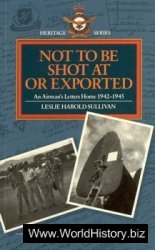B y a century after Columbus’s fi rst expedition, his voyages were already history.
Authors and editors in many parts of Europe had used his journals and letters,
along with those of other captains, mariners, soldiers, and missionaries, to weave a
story of travel, exploration, and conquest, and then commented on that story, literally
transforming it into history. Two English clergymen, Thomas Hakluyt (1552–1616) and
Samuel Purchas (1575?–1626), were important creators of that history. As a student at
Oxford, Hakluyt read everything he could about European explorations, began giving
lectures on geography, and published a history of voyages, highlighting those made
under the English fl ag. This brought him to the attention of members of court, and
he was sent as the chaplain with an English delegation to Paris, where he was to listen
for information about French and Spanish actions in the New World and anything else
that might prove helpful to English interests. He continued to gather stories, translated
and published a French history of voyages to Florida, wrote several works in Latin, and
on returning to England published the fi rst edition of his chief work, The Principal
Navigations, Voyages and Discoveries of the English Nation (1589), which he later expanded
to three volumes.
The Principal Navigations includes texts written by many voyagers, famous and
largely unknown, which Hakluyt reports that he included “word for word,” rescuing
them from “musty darkness . . . misty corners . . . and perpetual oblivion.” His prefaces
make clear that he hoped these works would encourage more English voyages to the
west, which would help spread Christianity, allow England to obtain tropical products
such as silk and spices on its own, widen the market for English cloth, and transform
England into a powerful nation.
Hakluyt’s promotion of exploration was not limited to writing. He became an advisor
to the British East India Company and an important voice in the group urging
King James to found colonies in North America. He gained the position of vicar in
the Anglican Church of the next English settlement in North America whenever it
was founded, which, like most clerical posts (of which Hakluyt already had several),
brought an income. When that settlement – named, unsurprisingly, Jamestown – was
actually established in 1607, Hakluyt sent a curate to carry out the actual clerical duties,
a standard pattern in the Anglican Church. His various church positions made him a
wealthy man, and he invested in overseas voyages, becoming, in the word used at the
time, an “adventurer.” He also continued to translate and publish reports of voyages,
and encouraged the translation of all types of works on the world beyond Europe. He
was buried in Westminster Abbey, a high honor.
Samuel Purchas was not as fortunate as Hakluyt, though their careers followed similar
paths. Like Hakluyt, he also became interested in the voyages of exploration while a
student and held a series of church positions, writing two works of what we might term
comparative religious history based on reading Hakluyt and other works: Purchas, his
Pilgrimage; or, Relations of the World and the Religions observed in all Ages (1613) and
Purchas, his Pilgrim. Microcosmus, or the histories of Man. Relating the wonders of his
Generation, vanities in his Degeneration, Necessity of his Regeneration (1619). The two
men met in 1613, but personal disagreements apparently kept Purchas from acquiring
Hakluyt’s voluminous papers until after his death. Those papers – both Hakluyt’s
own unpublished notes and the many journals, log-books, and other sources he had
collected – formed the basis for Purchas’s huge multiple-volume work: Hakluytus Posthumus
or Purchas His Pilgrimes, contayning a History of the World in Sea Voyages and
Lande Travells, by Englishmen and others (1625–6). Purchas was not as careful an editor
as Hakluyt, but most of the original manuscripts on which he based his work have been
lost, so the book contains information available nowhere else.
Hakluytus Posthumus also includes Purchas’s refl ections on the history he was telling
and that Hakluyt helped to make. Purchas commented that Europe was the smallest
continent, but that “the Qualitie of Europe exceeds her Quantitie” in many things:
If I speake of Arts and Inventions (which are Men’s properest goods, immortall Inheritance
to our mortalitie) what have the rest of the world comparable? First the Liberall Arts are most
liberall to us, having long since forsaken their Seminaries in Asia and Afrike, and here erected
Colleges and Universities. And if one Athens in the east (the antient Europaean glory) now
by Turkish Barbarisme be infected, how many Christian Athenses have wee in the west for it.
As for Mechanicall Sciences, I could reckon . . . the many artifi cial Mazes and Labyrinths in
our watches, the great heavenly Orbes and motions installed in so small a model . . . Who ever
tooke possession of the huge Ocean, and made procession round about the vast Earth? Who
ever discovered new Constellations, saluted the Frozen Poles, subjected the Burning Zones? …
And is this all? Is Europe onely a fruitfull Field, a well watered garden, a pleasant Paradise in
Nature? A continued Citie for habitation? Queene of the World for power? A School of Arts
Liberall, Shop of Mechnicall, tents of Military, Arsenall of Weapons and shipping? Nay, these
are the least of Her praises, or His rather, who hath given Europe more than Eagle’s wings, and
lifted her up above the Starres … Europe is taught the way to scale Heaven, not by Mathematicall
principles, but by Divine veritie. Jesus Christ is their way, their truth, their life; who hath
long since given a Bill of Divorce to ungrateful Asia where hee was borne, and Africa the place
of his fl ight and refuge, and is become almost wholly and onely European. 1
Purchas’s comments about Europe’s taking “possession of the whole Ocean” were a
bit premature in 1625. At that point, the Spanish controlled most of Central America,
Peru, the Philippines, and some islands in the Caribbean, and loosely held the north
and west coast of South America. The Dutch and the Portuguese shared the coast of
Brazil and some fortifi ed trading posts on islands and coasts in the Indian Ocean and
western Africa. However, the French colony in Quebec had a total population of eightyfi
ve, and the two English colonies in North America, Jamestown and Plymouth, and
the one Dutch colony, New Netherland, were also tiny and brand new. English sailors
had just landed on Barbados, but there were no settlers there yet.
By 1789 the picture was very different. Spain and Portugal had effective control
of much of South America, and Spanish holdings in Central America stretched into
early modern europe, 1450–1789
North America; Portugal had several trading colonies on the African coasts, and Goa
in India. The French Empire around the world had been signifi cantly reduced by its
losses in the Seven Years War (1756–63), but still included well-populated islands in the
Caribbean, French Guiana in South America, and smaller colonies around the Indian
Ocean and the Pacifi c and along the coast of Africa. Dutch power had declined since
its seventeenth-century heights, and Dutch trade had been severely disrupted during
the Fourth Anglo-Dutch War (1780–4), but the Dutch still held most of the East Indies,
Ceylon, several islands in the Caribbean, and Surinam in South America. Purchas’s
own Britain was doing the best. Though it had recently lost some of its North American
holdings in the War of American Independence (1775–83), it still held much of
North America, many of the islands in the Caribbean, and a small colony in Central
America. A British company had direct rule of part of India, and indirect rule of more.
Britain claimed islands in the Pacifi c, had a fort on Vancouver Island on the west coast
of North America, and had just established the fi rst colony in Australia.
European ventures throughout the world in the seventeenth and eighteenth centuries
were similar in many ways to those in the sixteenth century that we traced in chapter 7 ,
but they also involved new themes and players. Explorers continued to search for routes
from Europe to Asia, but also gathered scientifi c information and pushed further into
the interiors of North and South America. Rulers continued to support exploration and
colonization, but private companies became more important, providing fi nancial backing,
ships, and personnel. In some places these private companies became the actual territorial
rulers, working with or displacing indigenous authorities. Colonies continued
to provide wealth to monarchs and private investors through the extraction of natural
resources such as precious metals and furs, but plantations of tropical crops using slave
labor or other types of forced labor systems became the most signifi cant engines of
wealth. The European presence in some parts of the world remained limited to small
isolated trading posts, but in other areas large numbers of Europeans and their descendants,
along with people from other continents brought in by Europeans, came to vastly
outnumber indigenous peoples. In every colonial area, Europeans developed systems of
defi ning and regulating the various peoples under their control based on conceptualizations
of difference that changed during this period.




 World History
World History









